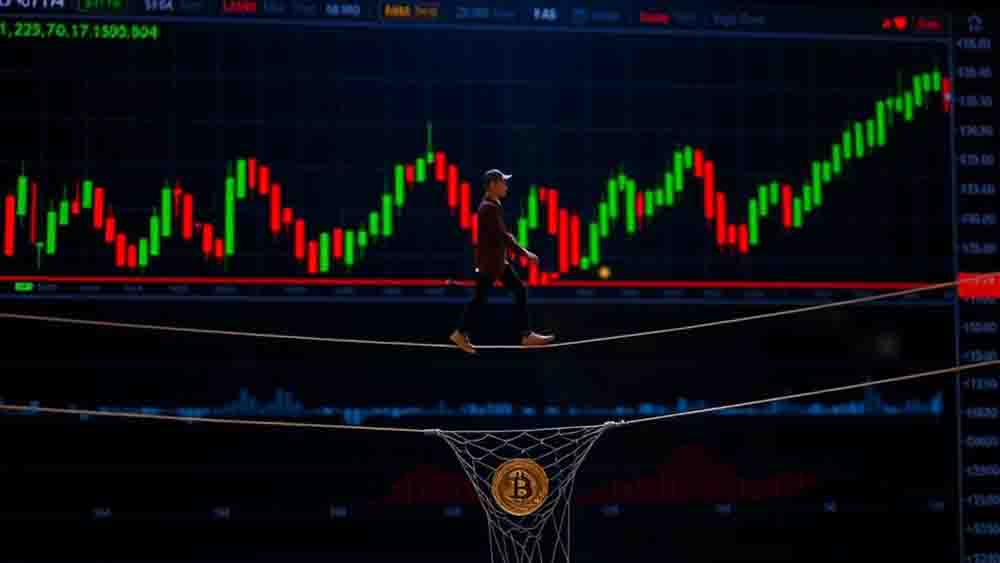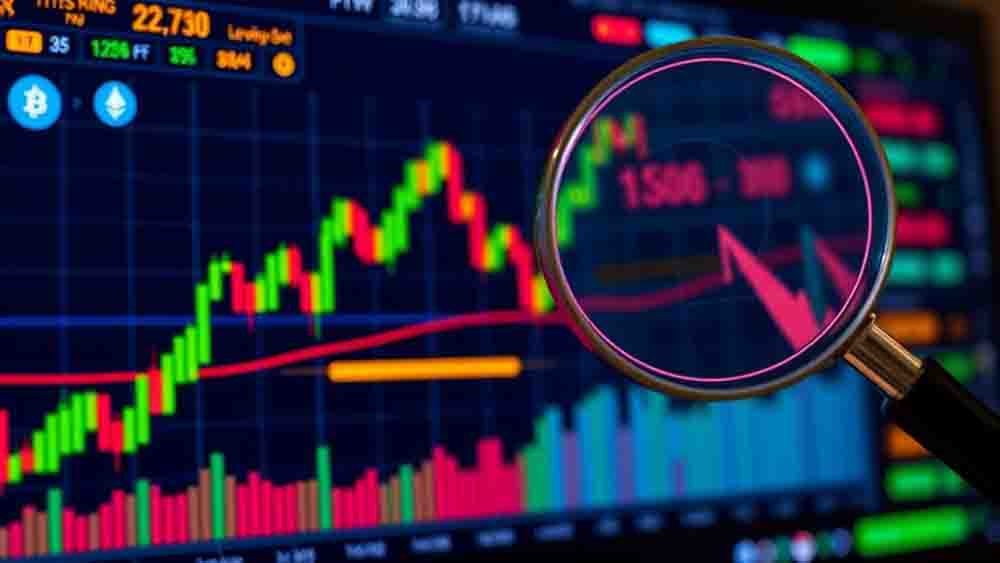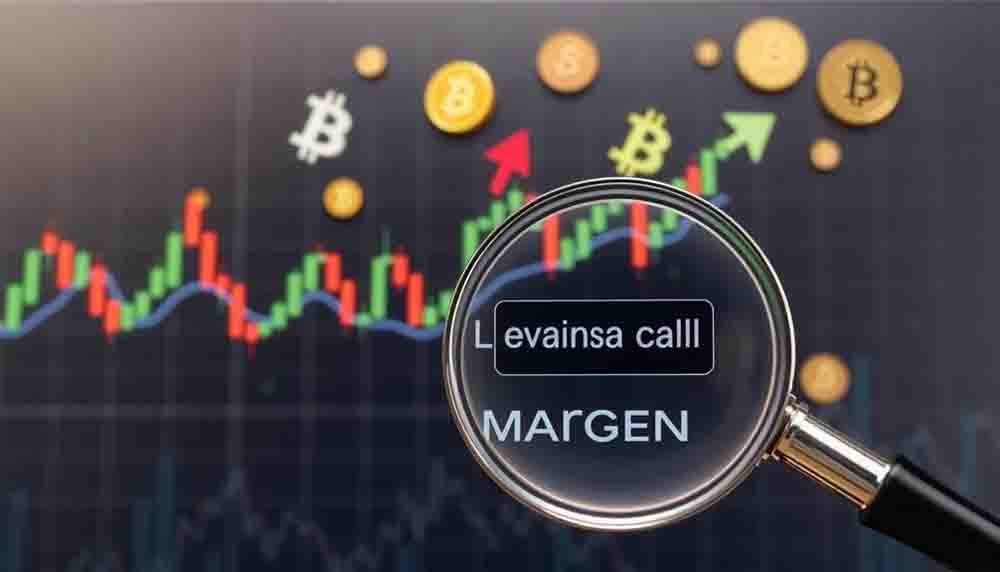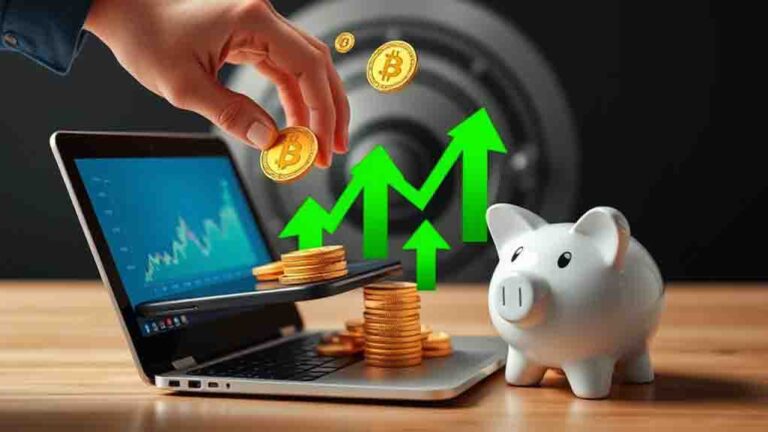What Is Crypto Margin Trading and How It Works?
Note: This post may contain affiliate links, and we may earn a commission (with No additional cost for you) if you make a purchase via our link. See our disclosure for more info. The crypto world is constantly changing. This content is for informational purposes only and not financial, legal, or professional advice So, please verify the info on the cryptocurrency provider’s websites.
You’ve probably heard of crypto margin trading. However, you may not understand all its details. It's a risky game that can boost your profits or losses in the unpredictable world of cryptocurrencies. When you borrow money to boost your market exposure, you are betting on your skill to accurately predict market changes. But before you jump in, it's vital to understand the mechanics, risks, and potential rewards. This trading strategy has hidden layers. The details often make the difference between success and failure. Let's explore what you need to know to navigate this complex landscape.
Key Takeaways
- Crypto margin trading allows traders to borrow funds to amplify their trading positions, increasing potential gains and losses.
- Traders use leverage ratios, ranging from 1X to 100X or more, to multiply their market exposure beyond their initial investment.
- A margin account is required, with initial margin as collateral to open positions and maintenance margin to keep them open.
- Long positions bet on price increases by borrowing to buy crypto, while short positions profit from price declines.
- Risk management is crucial, involving stop-loss orders, careful leverage management, and continuous market monitoring to prevent liquidation.
Definition of Crypto Margin Trading
In recent years, crypto margin trading has emerged as a popular yet complex strategy in the cryptocurrency market. This advanced trading method allows you to borrow funds from an exchange to increase your trading position beyond your available capital. By using leverage, you can amplify your potential gains—and losses—in the volatile crypto market.
Crypto margin trading works by using a small amount of your own funds, called the initial margin, as collateral. This collateral enables you to access leverage ratios that can range from 1X to 100X or more. With this increased buying power, you can open both long positions (betting on price increases) and short positions (betting on price decreases).
To engage in margin trading, you'll need to maintain a margin account with the exchange. This account requires you to keep a certain level of collateral, known as the maintenance margin. If your position moves against you and your account falls below this threshold, you may face a margin call, requiring you to add funds or risk liquidation.
It's essential to understand the risks involved in crypto margin trading:
- Potential losses can exceed your initial investment
- High volatility can lead to rapid liquidation
- Leverage amplifies both gains and losses

Mechanics of Leveraged Positions
Understanding the mechanics of leveraged positions is essential to maneuvering crypto margin trading successfully. When you engage in margin trading, you're using borrowed funds to increase your potential profits. Here's how it works:
- Initial Margin: You'll need to deposit collateral into your trading account to open a position. This is called the initial margin.
- Leverage: The leverage ratio determines how much you can borrow. For example, with 20:1 leverage, you only need to provide 5% of the total position value.
- Borrowed Funds: The remaining 95% is borrowed from the exchange or broker.
- Maintenance Margin: You must maintain a minimum amount in your account, known as the maintenance margin, to keep your position open.
- Margin Call: If the market moves against you and your account equity drops below the maintenance margin, you'll receive a margin call.
- Liquidation Risk: Failure to meet a margin call can result in automatic liquidation of your position.
It's vital to understand these mechanics and monitor your margin levels closely.
While leverage can amplify profits, it also increases the risk of significant losses if the market moves unfavorably.
Margin Requirements and Leverage Ratios
Margin requirements and leverage ratios form the backbone of crypto margin trading. These two elements determine how much you can borrow and the collateral you need to maintain your positions.
Margin requirements are expressed as a percentage of the total trade value, representing the minimum collateral needed to open and maintain a position.
Leverage ratios, on the other hand, indicate how much borrowed capital you can use in relation to your own funds. Common ratios range from 2:1 to 100:1, allowing for significant market exposure. For example, with a 10:1 leverage ratio, you can control a $10,000 position using only $1,000 of your own capital.
There are two types of margins to take into account:
- Initial margin: The upfront collateral required to open a position
- Maintenance margin: The minimum equity you must maintain to avoid a margin call
Understanding these concepts is vital for effective risk management. Different exchanges set specific margin requirements and leverage ratios, so it's important to familiarize yourself with their rules.

Long Vs Short Trading Strategies
When trading on margin, you'll need to understand the difference between long and short positions.
In a long position, you're betting on the price of a cryptocurrency to rise, while a short position profits from a price decline.
Each strategy comes with its own profit potential and risks, so it's essential to implement proper risk management techniques, such as setting stop-loss orders and carefully monitoring market trends.
Defining Long/Short Positions
Crypto margin trading offers two primary strategies: long and short positions. In a long position, you borrow funds to purchase cryptocurrency, betting on its price increase. You aim to sell it later at a higher price for profit.
Conversely, a short position involves borrowing cryptocurrency to sell at the current market price, expecting to buy it back at a lower price later, profiting from the price decline.
Both strategies require thorough market analysis to determine entry and exit points and assess potential risks associated with price movements. The profit potential in margin trading can be considerable due to leverage. For example, a 10% price increase on a $1,000 investment magnified by 10x leverage can yield a $1,000 profit in a long position.
Similarly, a 10% decline can achieve the same profit in a short position.
However, margin trading carries notable risks:
- Long positions can lead to considerable losses if the market trends downward.
- Short positions carry the risk of unlimited losses if prices rise considerably.
- Leverage amplifies both gains and losses, potentially wiping out your investment.
Effective risk management is essential in crypto margin trading to mitigate these risks and maximize potential profits.
Profit Potential Comparison
Both long and short trading strategies in crypto margin trading offer substantial profit potential, but they differ in how gains are realized. In long positions, you profit from price increases, borrowing cryptocurrency to amplify potential gains through leverage. For example, a 20% rise in a $1,000 position at 5x leverage could yield a $1,000 profit.
Short positions, conversely, allow you to profit from falling prices by borrowing assets to sell. The profit potential in both strategies is greatly enhanced by leverage, but it's vital to understand the associated risks. Long positions limit potential losses to your initial investment, while short positions can lead to unlimited losses if prices rise dramatically.
Margin calls are a concern in both scenarios, occurring when your account equity falls below maintenance margin levels. To successfully execute either strategy, you'll need to conduct thorough market analysis and understand price movements. Crypto markets are volatile, leading to rapid gains or losses.
Your ability to interpret market trends and manage risk will greatly influence your profit potential. Remember that leveraged positions require careful monitoring and may necessitate additional collateral to avoid liquidation. Always consider your risk tolerance and market knowledge before engaging in margin trading.
Risk Management Strategies
Risk management's importance in crypto margin trading can't be overstated, especially when comparing long and short strategies. When you're engaged in margin trading vs traditional trading, the stakes are higher due to leverage considerations.
For long positions, set stop-loss orders just below key support levels to minimize potential losses if the market moves against you. In short trades, use trailing stop-loss orders to protect profits as prices decline, while being aware of the risk of unlimited losses if the asset price rises unexpectedly.
Effective risk management strategies for both long and short positions include:
- Carefully managing leverage to avoid liquidation due to small market fluctuations
- Continuously monitoring market conditions to anticipate volatility
- Setting appropriate stop-loss orders to limit potential losses
It's essential to maintain market conditions awareness, as volatility can greatly affect position values and trigger margin calls.

Risks and Potential Rewards
With great potential comes significant risk in the world of crypto margin trading. When you borrow leverage, you can amplify your profits, but you're also exposed to greater losses. The risks of crypto margin trading include the possibility of losing more than your initial investment and facing liquidation if the market moves against you.
Here's a breakdown of the risks and potential rewards:
| Risk | Description | Mitigation |
|---|---|---|
| Liquidation | Position closed if collateral falls below maintenance margin | Use lower leverage |
| Amplified Losses | Small price movements can lead to significant losses | Set stop-loss orders |
| Interest Costs | Fees on borrowed money affect profitability | Factor in interest rates |
| Volatility | Crypto markets are highly unpredictable | Stay informed and vigilant |
| Emotional Trading | Fear and greed can lead to poor decisions | Stick to a trading plan |
While the potential rewards of margin trading can be substantial, it's essential to manage your risks effectively. You can achieve significant profits by leveraging borrowed money, but remember that the liquidation risk is always present. To protect your investment, use risk management strategies, carefully consider the leverage you borrow, and always have collateral to cover potential losses.
Popular Crypto Margin Trading Platforms
When exploring crypto margin trading platforms, you'll find a variety of options to suit your needs.
Top centralized exchanges like Binance and Kraken offer robust features and varying leverage options, while decentralized platforms such as dYdX provide increased privacy and flexibility.
As you compare these platforms, you'll want to evaluate factors like available trading pairs, leverage limits, fees, and security measures to determine which one aligns best with your trading strategy and risk tolerance.
Top Centralized Exchange Options
Steering through the world of crypto margin trading can be intimidating, but several centralized exchanges stand out as popular platforms for this high-stakes activity.
Binance, one of the largest global exchanges, offers margin trading with leverage options up to 10x on isolated margin accounts and 3x on regular accounts.
Kraken provides margin trading for over 100 cryptocurrency pairs, typically allowing 2x to 3x leverage while emphasizing security and regulatory compliance.
For traders seeking higher leverage options, ByBit offers up to 100x leverage on select assets, catering to those looking to maximize potential returns in volatile markets.
Bitfinex provides an extensive platform for advanced traders, offering multiple leverage options and the ability to lend and borrow cryptocurrencies.
When choosing a margin trading platform, consider:
- The level of security and regulatory compliance offered
- The range of leverage options available
- The variety of cryptocurrencies supported for margin trading
These centralized exchanges provide various features to suit different trading styles and risk appetites.
It's essential to understand the risks involved with trading crypto on margin, as borrowed money can amplify both gains and losses in the volatile crypto market.
Decentralized Margin Trading Platforms
While centralized exchanges dominate the crypto margin trading landscape, decentralized platforms have emerged as compelling alternatives.
These decentralized margin trading platforms, like dYdX, offer unique advantages for traders seeking greater control and privacy over their funds. By leveraging smart contracts, these platforms automate trading processes and liquidations without intermediary involvement.
Key features of decentralized margin trading platforms include:
- High leverage options (up to 25x on select pairs)
- No KYC requirements, enhancing privacy
- Lower fees compared to centralized exchanges
- Ability to provide liquidity and earn fees
- Maintenance of asset ownership
Smart contracts enable automated trading and liquidations, reducing the need for manual intervention. This automation can lead to more efficient and transparent operations.
Additionally, these platforms often don't charge interest on borrowed funds, potentially lowering overall trading costs.
Comparing Features and Fees
Among the various crypto margin trading platforms, several stand out for their unique features and fee structures. Binance offers isolated margin trading with up to 10x leverage on over 600 pairs, but U.S. residents face limitations on Binance.US.
Kraken provides margin trading on more than 100 cryptocurrency pairs with 2x to 3x leverage, emphasizing strong security measures. ByBit distinguishes itself with high leverage options up to 100x on selected cryptocurrencies and a user-friendly interface.
For those seeking a decentralized option, dYdX operates without KYC requirements, allowing users to trade with leverage on various crypto assets.
When comparing platforms for crypto margin trading, consider these factors:
- Trading fees and interest rates on borrowed funds
- Available leverage and supported cryptocurrency pairs
- Security measures and regulatory compliance
Fees vary across platforms, with Binance and Kraken typically charging transaction fees and interest on borrowed funds. dYdX may have different fee structures due to its decentralized nature.
When selecting a platform, evaluate the collateral requirements, maximum leverage offered, and the range of tradable assets. Remember that higher leverage increases both potential profits and risks, so choose a platform that aligns with your risk tolerance and trading strategy.
Risk Management in Margin Trading
Risk management is undeniably essential in crypto margin trading. As you engage in this high-stakes activity, implementing effective strategies can help protect your investments and minimize potential losses. One vital technique is setting stop-loss orders, which automatically close your positions when losses reach a predetermined level, mitigating financial damage.
Starting with lower leverage is wise, as higher leverage amplifies both gains and losses. Regularly monitor your margin levels to avoid margin calls and potential liquidation. Diversification across multiple assets can help spread risk and reduce the impact of adverse price movements in any single cryptocurrency.
To enhance your risk management:
- Establish clear entry and exit strategies before initiating trades
- Use stop-loss orders to limit potential losses
- Start with lower leverage and gradually increase as you gain experience
- Monitor margin levels closely to avoid margin calls
- Diversify your margin trades across different cryptocurrencies
Frequently Asked Questions
How Does Margin Trading in Crypto Work?
Crypto margin trading allows you to borrow funds from exchanges to increase your trading position. You can open long or short positions with leverage options typically ranging from 1X to 100X.
You'll need to provide initial margin as collateral and maintain a minimum balance to keep your position open. If the market moves against you and your collateral drops below the maintenance margin, liquidation occurs.
Is Crypto Margin Trading Profitable?
Crypto margin trading can be profitable, but it's a high-risk strategy. You can potentially amplify your gains by leveraging your positions, allowing you to profit from small price movements.
However, you'll face increased risks, including the possibility of losses exceeding your initial investment. To succeed, you'll need a deep understanding of market dynamics and robust risk management skills.
What Happens if You Lose a Margin Trade on Crypto?
Envision this: your crypto margin trade plummets, leaving you in a financial freefall. Here's what happens:
- Your losses can exceed your initial investment.
- You'll face a margin call, requiring additional funds.
- Your collateral may be liquidated automatically.
- Interest on borrowed funds continues to accrue.
- A small market movement can lead to substantial losses.
You're responsible for repaying borrowed funds, regardless of the outcome.
The exchange may liquidate your position at a predetermined price to cover losses.
It's essential to understand these risks before engaging in crypto margin trading.
Is Crypto Margin Trading Legal in the US?
Yes, crypto margin trading is legal in the U.S., but it's subject to strict regulations.
You'll need to comply with CFTC and NFA rules, and exchanges must follow KYC requirements.
While it's allowed, many U.S. exchanges limit or don't offer margin trading to American investors due to regulatory constraints.
Be aware that starting in 2025, exchanges will report tax information under the Build Back Better Act.
It's essential that you understand your legal obligations and the specific regulations governing the platforms you use.

Conclusion
As you explore crypto margin trading, remember it's a double-edged sword. While it can amplify your gains, it's like playing with financial dynamite. You'll need to balance the potential rewards against significant risks. Stay informed, use risk management strategies, and choose reputable platforms. Don't let the allure of quick profits cloud your judgment. Approach margin trading with caution, always keeping your long-term financial health in focus. It's not for everyone, but for some, it can be a powerful tool.












